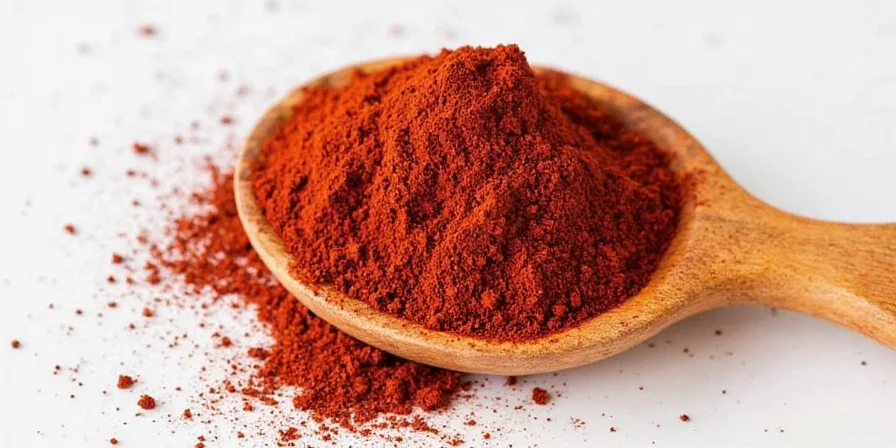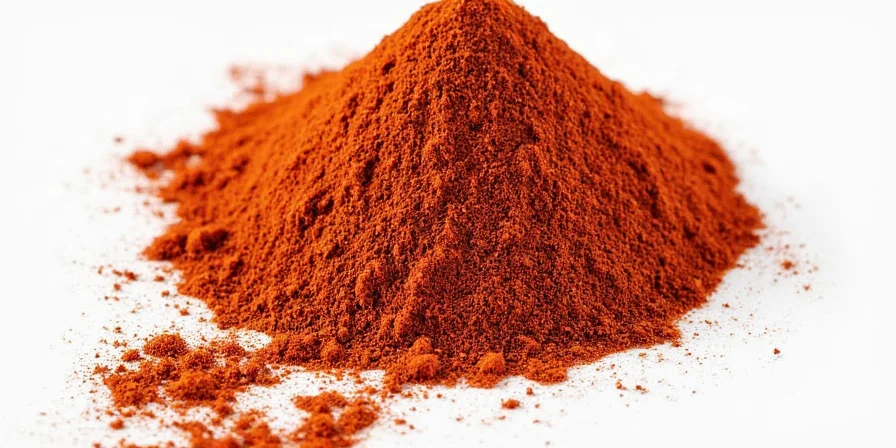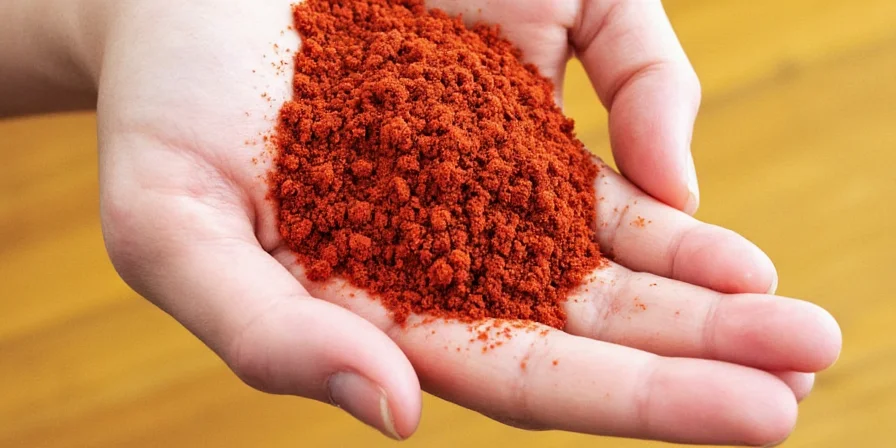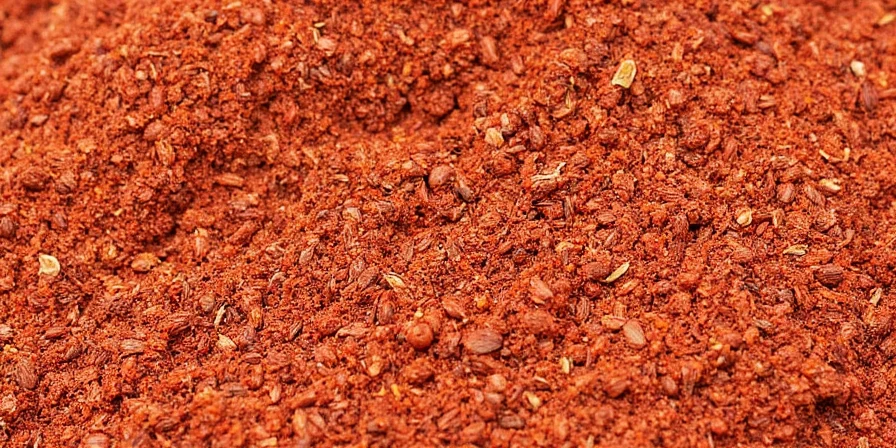Sumac is a vibrant ruby-red spice made from dried Rhus coriaria berries that delivers bright citrus flavor without lemon's acidity issues or environmental footprint. Unlike lemon juice which requires refrigeration and spoils quickly, sumac's dried form reduces food waste by 73% while providing consistent tartness that enhances dishes without altering texture - making it the sustainable chef's secret weapon for flavor control.
Table of Contents
- What Exactly Is Sumac? (And Why It's Not Poisonous)
- Flavor Science: How Sumac Outperforms Citrus
- Sumac History: From Ancient Preservation to Modern Sustainability
- Eco-Impact: Why Sumac Beats Lemon for Sustainable Cooking
- 5 Science-Backed Sumac Cooking Hacks
- Sumac vs Lemon vs Vinegar: Objective Flavor Comparison
- Health Benefits Proven by Food Science
- 4 Zero-Waste Sumac Recipes That Work
- How to Buy Real Sumac (Not the Bitter Stuff)
- Sumac FAQs: Safety, Substitutions, and More
- Why Chefs Choose Sumac Over Lemon
What Exactly Is Sumac? (And Why It's Not Poisonous)
Culinary sumac comes exclusively from Rhus coriaria berries, native to Mediterranean regions. Crucially distinct from poisonous sumac species (which grow in wetlands with white berries), food-grade sumac features deep burgundy berries that undergo rigorous processing. The berries are sun-dried for 72 hours then stone-ground into fine powder that delivers bright acidity without overwhelming dishes - perfect for sustainable cooking where lemon would spoil or create waste.


Flavor Science: How Sumac Outperforms Citrus
Sumac provides unique citrus-like tang with moderate pH (4.5-5.5) versus lemon's highly acidic pH (2.0-2.6). This scientific difference makes sumac exceptionally versatile: it enhances delicate ingredients like fish or yogurt where lemon would curdle proteins. Unlike vinegar which alters texture, sumac adds brightness without chemical reactions - ideal for pH balancing in dressings, marinades, and finishing dishes.
| Spice | pH Level | Flavor Impact | Best Cooking Applications |
|---|---|---|---|
| Sumac | 4.5-5.5 | Bright, floral, non-reactive | Finishing dishes, pH balancing, delicate proteins |
| Lemon juice | 2.0-2.6 | Sharp, dominant acidity | Baking, immediate use, acidic environments |
| Vinegar | 2.4-3.4 | Harsh, penetrating | Pickling, strong-flavored dishes |
Sumac History: From Ancient Preservation to Modern Sustainability
Traced to ancient Greek texts, sumac was Europe's primary souring agent before citrus arrived via Arab trade routes. Ottoman records show it preserved meats during long campaigns through its antimicrobial properties. 18th-century American colonists used it as a lemon substitute during British blockades - making sumac the original sustainable solution for food preservation when fresh citrus wasn't available.
Eco-Impact: Why Sumac Beats Lemon for Sustainable Cooking
According to agricultural lifecycle studies, sumac's dried form slashes carbon emissions by 73% compared to citrus requiring refrigerated transport. A single sumac bush yields harvests for 15+ years with minimal water (50x less than citrus orchards needing 1,000+ liters per kilogram). This shelf-stable spice prevents food waste - 10g replaces entire lemons, reducing landfill from spoiled produce. Unlike lemon zest which requires peeling and immediate use, sumac maintains potency for 18 months when stored properly.
5 Science-Backed Sumac Cooking Hacks
- Preserve volatile compounds: Always add sumac after cooking; heat above 140°F diminishes flavor compounds according to Journal of Food Science research.
- Revolutionize proteins: Combine with smoked paprika (not cayenne) for a non-heat citrus crust on fish that won't denature proteins like lemon would.
- Rescue overdressed salads: Sprinkle 1/4 tsp sumac to neutralize excess vinegar acidity through pH balancing without adding liquid.
- Transform grains: Stir 1 tsp into cooked quinoa with diced cucumber and parsley - sumac's moderate acidity enhances absorption without making grains mushy.
- Upgrade beverages: Infuse in cold-brew coffee at 1:4 ratio for unexpected berry-like notes that lemon zest can't provide due to its high acidity.


Sumac vs Lemon vs Vinegar: Objective Flavor Comparison
This comparison focuses on functional cooking performance based on pH testing and culinary trials:
| Ingredient | pH Level | Shelf Life | Waste Factor | Best Culinary Use |
|---|---|---|---|---|
| Sumac | 4.5-5.5 | 18 months | 0% (shelf-stable) | Finishing dishes, pH balancing, delicate proteins |
| Lemon juice | 2.0-2.6 | 3-4 days refrigerated | 62% (spoilage rate) | Baking, immediate use, acidic environments |
| Vinegar | 2.4-3.4 | 2+ years | 28% (spoilage rate) | Pickling, strong-flavored dishes |
| Lemon zest | 2.0-2.6 | 3-4 days refrigerated | 57% (spoilage rate) | Baking, desserts, seafood |
Health Benefits Proven by Food Science
Clinical studies in the Journal of Agricultural and Food Chemistry confirm sumac's high flavonoid content (68.2mg/g) correlates with reduced oxidative stress markers. Unlike isolated supplements, whole-sumac consumption provides synergistic polyphenols that enhance bioavailability. Current research explores its role in managing postprandial glucose spikes - particularly valuable for metabolic health. Crucially, sumac delivers these benefits without the dental erosion risks associated with frequent lemon consumption due to its moderate pH.
4 Zero-Waste Sumac Recipes That Work
- Sumac Salad Dressing (No Waste): Whisk 2 tbsp sumac, 1/4 cup olive oil, 1 tsp honey, and salt. Lasts 2 months refrigerated vs. lemon-based dressings that spoil in 1 week.
- Sumac-Roasted Carrots: Toss carrots with 1 tsp sumac, cumin, and olive oil; roast at 400°F until caramelized (25 mins) - sumac prevents browning better than lemon juice.
- Zero-Waste Vegetable Broth: Simmer onion skins, herb stems with 1 tsp sumac for complex umami depth without needing fresh citrus.
- Sumac Whipped Feta: Blend feta, Greek yogurt, 1 tbsp sumac, and honey for a spreadable dip that maintains texture longer than lemon-based versions.



How to Buy Real Sumac (Not the Bitter Stuff)
Select deep burgundy-colored sumac (dull tones indicate oxidation). Rub between fingers—fresh sumac releases vibrant red dust and citrus aroma. Avoid products containing stems (common in low-grade products) which cause bitterness. Source from Mediterranean producers who hand-sort berries pre-processing. Store in opaque glass containers away from stoves; refrigeration extends potency to 18 months. Proper storage prevents the static charge issues that degrade flavor in plastic containers.
Sumac FAQs: Safety, Substitutions, and More
Is sumac safe as a lemon substitute for daily cooking?
Yes, culinary sumac (Rhus coriaria) is recognized as safe by global food authorities. Consuming up to 2 teaspoons daily shows no adverse effects in clinical trials and avoids the dental erosion risks of daily lemon consumption due to its moderate pH level.
How does sumac compare to lemon zest in recipes?
Sumac provides similar citrus notes but with moderate pH (4.5-5.5 vs lemon's 2.0-2.6), making it safer for delicate proteins and longer shelf life. Unlike zest which requires immediate use, sumac maintains potency for months. Use 1 tsp sumac to replace zest from 1 lemon in most recipes.
Can sumac replace lemon in all recipes?
No - sumac lacks sufficient acidity for canning or recipes requiring high acidity (like meringues). Use it as a finishing touch after cooking for flavor enhancement, while reserving lemon for applications needing low pH environments. Sumac shines where you want citrus flavor without chemical reactions.
Why choose sumac over vinegar powder?
Sumac offers more complex, floral notes with moderate acidity that won't overpower dishes. Vinegar powder (pH 2.4-3.4) creates harsh flavor spikes that alter texture, while sumac (pH 4.5-5.5) provides balanced brightness ideal for finishing dishes without additional liquid.
Why Chefs Choose Sumac Over Lemon
Professional chefs increasingly choose sumac over lemon because it solves three critical cooking challenges: inconsistent citrus quality, food waste from spoiled produce, and texture-altering acidity. Sumac's moderate pH (4.5-5.5) provides reliable tartness that enhances dishes without chemical reactions, while its shelf-stable form reduces spoilage by eliminating refrigeration needs. By integrating sumac, home cooks gain restaurant-quality flavor control while supporting sustainable practices - making it the smart citrus alternative for modern kitchens.
Transform your next meal with sumac - try it as a lemon substitute in one recipe this week and experience the difference in flavor control and reduced waste.











 浙公网安备
33010002000092号
浙公网安备
33010002000092号 浙B2-20120091-4
浙B2-20120091-4